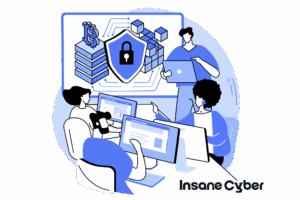When it comes to industrial cybersecurity, one of the most persistent and misunderstood risks isn’t new malware or sophisticated nation-state attacks—it’s time.
Legacy Operational Technology (OT) systems, still running decades-old hardware and software, underpin critical infrastructure across manufacturing, energy, and utilities. These systems were designed to last, and they have. But in doing so, they’ve become an increasingly attractive target for attackers.
Understanding Legacy OT Systems
Operational Technology (OT) encompasses the control systems that make industrial environments function: programmable logic controllers (PLCs), distributed control systems (DCS), sensors, actuators, and the software that orchestrates them.
A legacy OT system is any of these components operating long beyond its original design lifecycle—often 20, 30, or even 40 years. Unlike IT, which cycles through hardware and software upgrades every few years, OT infrastructure is built to last decades. Many plants were commissioned before cybersecurity was even a consideration, and automation was bolted on later through retrofits.
Because of this, a single industrial site may contain a mix of:
Controllers from the 1980s running proprietary code.
Windows XP or Windows 7-based HMIs.
Unencrypted communication protocols that assume trust.
Components that vendors no longer support or patch.
These systems work—and for many organizations, that’s the priority. The problem is that “if it isn’t broken, don’t fix it” doesn’t hold up against modern cyber risk.

Why Legacy Systems Are Vulnerable
Legacy OT environments are inherently difficult to secure because they were built for reliability and uptime, not resilience. Their vulnerabilities typically stem from five persistent realities:
Unpatchable or Unsupported Technology
Updating legacy systems is risky—downtime costs money, and in some cases, the original vendor is long gone. As a result, known vulnerabilities remain indefinitely.Flat Network Architectures
Many facilities still operate on flat networks where all systems share the same broadcast domain. Once an attacker gains access, lateral movement is trivial.Insecure-by-Design Protocols
Protocols like Modbus, DNP3, and BACnet were designed for deterministic performance, not security. They transmit data without encryption or authentication.Operational Constraints
OT systems run continuously, often 24/7. Security controls that might disrupt availability—even for a few seconds—are typically avoided.Converging IT/OT Ecosystems
As IT and OT environments become increasingly connected through digital transformation, vulnerabilities in corporate systems can now expose control networks.
The result is an ecosystem that attackers can map, manipulate, and monetize—often with tools and techniques that would fail against modern IT systems.
The Air Gap Myth
For years, “air-gapped” systems—those physically isolated from the internet—were considered immune from external attack. But in reality, very few environments remain truly isolated.
Maintenance engineers connect laptops. Vendors provide remote support. Data historians send production metrics to cloud dashboards. Even USB drives can become vectors for malware.
Each of these connections erodes the air gap until it’s little more than a comforting illusion.
In cybersecurity, assuming isolation is a dangerous fallacy. The better approach is assumed connectivity: operate under the expectation that your network can be reached and design defenses accordingly.

Securing the Unreplaceable
Most organizations can’t simply replace their legacy OT systems. The cost, complexity, and potential disruption to production are too high. Instead, cybersecurity strategies must work around these constraints.
Effective modernization starts with visibility and segmentation:
Asset Identification: You can’t protect what you can’t see. Building an accurate, continuously updated asset inventory is foundational.
Network Segmentation: Separating IT and OT zones limits lateral movement and minimizes risk exposure.
Passive Monitoring: Deploy monitoring tools that can observe traffic patterns without interfering with operations.
Secure Remote Access: Replace shared credentials and unmanaged VPNs with controlled, audited access pathways.
Incident Preparedness: Ensure incident response plans are designed specifically for OT—where containment actions must consider physical process safety.
The goal is not to replace decades of infrastructure overnight, but to bring it into a managed, observable, and defensible state.
The Takeaway
Legacy OT systems are both the backbone and the Achilles’ heel of industrial operations. Their longevity is a testament to engineering excellence—but also a reminder that reliability without security can no longer sustain critical infrastructure.
The air gap is gone. The perimeter is porous. And the time to treat legacy OT as a cybersecurity priority—not an operational afterthought—is now.
Seeing the Unseen: Deep Visibility for Legacy OT Systems
One of the greatest challenges in defending legacy OT systems is visibility. Many traditional cybersecurity tools rely on agents, endpoint telemetry, or active scanning — techniques that can disrupt fragile systems or simply aren’t compatible with legacy hardware.
That’s where modern OT monitoring platforms are making a difference.
Valkyrie, for example, is designed to safely dive deep into host and device-level data, even within mixed environments that blend decades-old controllers with newer connected assets. Instead of relying solely on network traffic, Valkyrie collects telemetry from the source: the control hosts, engineering workstations, and devices that run the process itself.
This deeper level of insight enables security teams to:
Detect hidden threats that don’t traverse the network, such as malware residing on engineering laptops or maintenance devices.
Correlate activity across hosts and process data to spot anomalous behavior indicative of manipulation or misuse.
Identify shadow assets or undocumented devices that have quietly persisted for years.
Baseline normal operations in systems that can’t be probed or scanned, allowing alerts only when something truly deviates from expected behavior.
Because Valkyrie can ingest and analyze data from both modern and legacy assets, it becomes a unifying layer of observability—delivering security visibility without requiring invasive changes or downtime.
Bridging the Past and Future of OT Security
Legacy systems will always be part of industrial operations. The key isn’t forcing them into modern IT paradigms—it’s protecting them with technologies that respect their constraints while still delivering actionable intelligence.
Platforms like Valkyrie are redefining how defenders approach OT cybersecurity. By extracting device-level insights without disrupting operations, they make it possible to monitor, detect, and respond across an ecosystem that spans generations of technology.
In a world where the air gap no longer exists, visibility is everything—and with tools that can see into the deepest layers of legacy systems, organizations can finally close the gaps attackers have relied on for decades.







